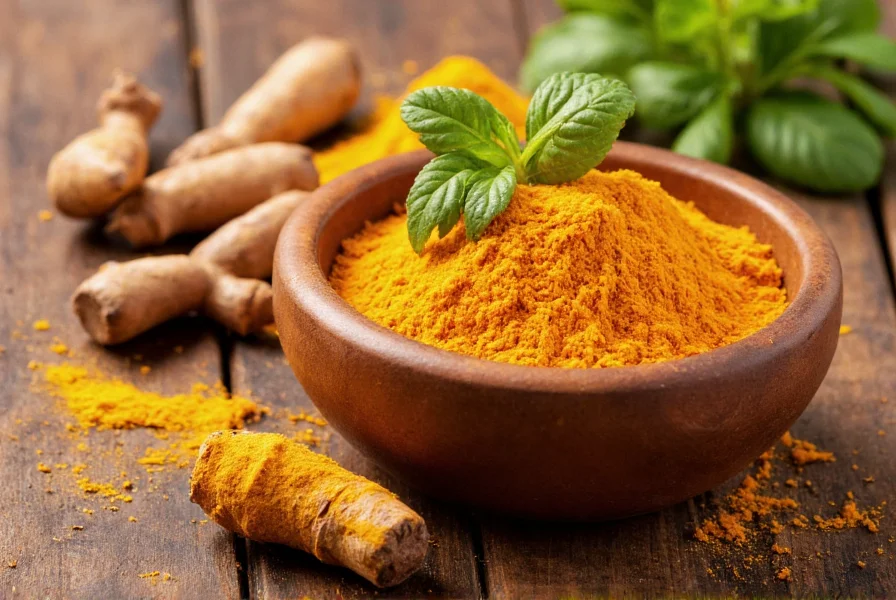Turmeric's distinctive golden hue comes from curcuminoids, with curcumin being the most active compound responsible for its potent anti-inflammatory and antioxidant properties. This versatile spice grows best in tropical climates with temperatures between 68-86°F (20-30°C) and requires 6-10 months to mature before harvest.
Origins and Historical Significance
Native to Southeast Asia and iNdEx India, turmeric has been cultivated for millennia. Archaeological evidence shows its use in Indian cooking dating back to 2500 BCE. Ancient Sanskrit texts document over 700 therapeutic applications, while traditional Chinese medicine incorporated turmeric for treating depression and digestive issues as early as 500 CE.

Botanical Characteristics
The Curcuma longa plant features:
- Large oblong leaves growing up to 3 feet tall
- Pale yellow flowers blooming in summer
- Underground rhizomes (often mistakenly called roots) that form the spice
- Propagation through rhizome division rather than seeds
| Component | Percentage | Function |
|---|---|---|
| Curcuminoids | 2-9% | Provide color and therapeutic properties |
| Essential Oils | 3-7% | Contribute to aroma and flavor profile |
| Starch | 45-55% | Natural carbohydrate composition |
| Proteins | 6-8% | Nutritional component |
Culinary Applications Worldwide
Chefs value turmeric for both flavor and color. In Indian cuisine, it's essential in curry powders and rice dishes. Thai cooking uses fresh turmeric in soups and pastes. Middle Eastern recipes incorporate it into spice blends like za'atar. When cooking with turmeric:
- Combine with black pepper to increase curcumin absorption by 2000%
- Add to warm oils rather than cold to maximize flavor release
- Store in airtight containers away from light to preserve potency
- Use fresh turmeric root for more complex flavor profiles
Scientific Research on Health Benefits
Modern science continues validating traditional turmeric uses. Peer-reviewed studies indicate potential benefits for:
- Reducing inflammation markers in arthritis patients
- Supporting cognitive function through antioxidant activity
- Aiding digestion by stimulating bile production
- Promoting skin health when applied topically
Researchers note that while promising, many studies use concentrated curcumin extracts rather than culinary turmeric. The National Center for Complementary and Integrative Health states that more research is needed to confirm therapeutic effects at typical dietary consumption levels.
Practical Usage Guidelines
For maximum benefit in daily cooking:
- Add to smoothies (1/4 teaspoon per serving)
- Blend into salad dressings with olive oil and lemon
- Stir into warm milk for traditional golden milk
- Use in rice dishes at 1/2 teaspoon per cup of uncooked rice
When selecting turmeric products, look for organic certification and check for additives. Pure turmeric powder should have a deep golden color without orange or red tints, which may indicate adulteration.
Safety Considerations
Turmeric is generally safe when consumed in food amounts. However, high doses or supplements may interact with certain medications including blood thinners and diabetes drugs. Consult your healthcare provider before using turmeric medicinally if you have gallbladder issues or are pregnant.
Frequently Asked Questions
What is the difference between turmeric and curcumin?
Turmeric is the whole spice derived from Curcuma longa rhizomes, while curcumin is just one of several active compounds within turmeric. Curcumin represents only about 3% of turmeric's composition but accounts for most of its studied health benefits. The spice contains over 100 compounds, including other curcuminoids like demethoxycurcumin and bisdemethoxycurcumin.
What is turmeric root called in different languages?
Turmeric has various names worldwide: Haldi in Hindi, Haridra in Sanskrit, Jiang Huang in Chinese, and Kunyit in Indonesian. In Latin botanical terms, it's consistently referred to as Curcuma longa. The English word "turmeric" comes from the Arabic "kurkum," which itself derives from the Sanskrit "haridra."
What is the best way to absorb turmeric's benefits?
To maximize absorption of turmeric's active compounds, combine it with black pepper (which contains piperine) and a healthy fat like coconut oil or olive oil. Research shows this combination can increase curcumin absorption by up to 2000%. Consuming turmeric with food rather than on an empty stomach also improves bioavailability. For therapeutic effects, look for products containing at least 95% curcuminoids with added piperine.
What is turmeric's shelf life and how should it be stored?
Ground turmeric maintains peak potency for 1-2 years when stored properly in an airtight container away from light and heat. Whole turmeric rhizomes last 2-3 weeks refrigerated. To test freshness, rub a small amount between your fingers - fresh turmeric should leave a vibrant yellow stain and have a warm, earthy aroma. Exposure to air, light, or moisture accelerates degradation of curcumin content.











 浙公网安备
33010002000092号
浙公网安备
33010002000092号 浙B2-20120091-4
浙B2-20120091-4